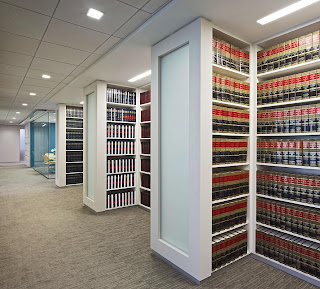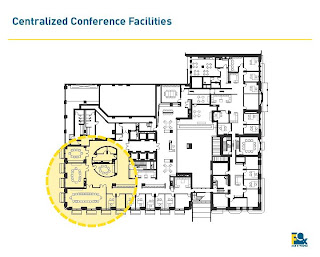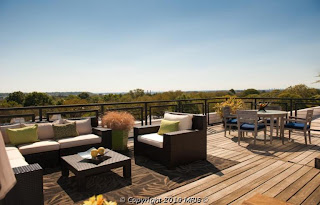 Fairfax county has officially begun work today on the second of two projects that developers hope will constitute a monumental remake of the beltway suburb. Together, the real estate megaprojects will add two metro stations, millions of square feet of office, reshape the streets, and build untold condominiums and apartments on over 50 acres of land in central Tysons. County planners today "officially accepted" the Capital One application for study, and will now begin the long process evaluating the 23 acre development as they recently did for the Georgelas Group's "Tysonsdemo" project that will transform 28 acres over 3 sites in central Tysons. The two projects have more potential to change the face of
Fairfax county has officially begun work today on the second of two projects that developers hope will constitute a monumental remake of the beltway suburb. Together, the real estate megaprojects will add two metro stations, millions of square feet of office, reshape the streets, and build untold condominiums and apartments on over 50 acres of land in central Tysons. County planners today "officially accepted" the Capital One application for study, and will now begin the long process evaluating the 23 acre development as they recently did for the Georgelas Group's "Tysonsdemo" project that will transform 28 acres over 3 sites in central Tysons. The two projects have more potential to change the face of  Tysons than the sum of all other proposed projects combined, and County officials acknowledge that today they can move the process from the minutia of filing requirements to public consideration of its merits.
Tysons than the sum of all other proposed projects combined, and County officials acknowledge that today they can move the process from the minutia of filing requirements to public consideration of its merits.The Georgelas project was the first - possibly of many - accepted for consideration by the county under the auspices of the newly minted Comprehensive Plan, a restructured set of guidelines designed to move Tysons from its suburban inception to an urban grid. Tysons Planners have been meeting regularly with Capital One and Georgelas executives to hammer out a workable proposal, and today's technical acceptance of the Capital One plan moves the project to a full staff review with public comment periods. The staff will ultimately forward their recommendations for the two projects to the Board of Supervisors for judgment. The turning point, albeit a technical one, was welcomed not just by the sponsoring developers but by a county that has struggled for years
 to craft a metamorphic plan in what has been an urban planner's nightmare - wide, high-speed streets that isolate buildings and kill meaningful retail.
to craft a metamorphic plan in what has been an urban planner's nightmare - wide, high-speed streets that isolate buildings and kill meaningful retail."Its a big deal in the sense that Capital One [and Georgelas] are the first projects that will begin to transform Tysons" said Brian Worthy, Public Information Officer for Fairfax. "Its very exciting that these proposals are taking advantage of the new plan," said Worthy. "Capital One’s application helps to advance the transformation of Tysons Corner into a walkable, livable urban center because it proposes high-density, mixed-used development near the Metro. This is exactly the kind of transit-oriented development that the plan to transform Tysons calls for." Capital One officials were unresponsive, but other participants in the process made it clear they thought the proposal had strong transformative potential. The site plan calls for 5 millions square feet in total development - 2.1 million s.f. of office space rising as high as 392 feet, a thousand or so residential units rising 20 stories, as well as hotels, parks, plazas and retail, all connected to what will be a brand new
 Tysons East Metro station. The design team includes Bonstra Haresign as Urban Planner and Architect and William H. Gordon Associates as Civil Engineer and Landscape Architect.
Tysons East Metro station. The design team includes Bonstra Haresign as Urban Planner and Architect and William H. Gordon Associates as Civil Engineer and Landscape Architect.The Georgelas Group plans to redevelop 28 acres on three sites throughout central Tysons, with 14 buildings totaling more than 6 million square feet designed by WDG Architecture and Parker Rodriquez landscape architects. The plan includes
 office buildings that rise up to 360 feet, a Metro station and surrounding plaza, central "civic park", apartment buildings, and retail incorporated into parking garages at street level to mask their street presence topped with "sky parks."
office buildings that rise up to 360 feet, a Metro station and surrounding plaza, central "civic park", apartment buildings, and retail incorporated into parking garages at street level to mask their street presence topped with "sky parks."Development will be balanced with civic areas and hotels that planners gauge will result in an overall presence of 65% office space and 20% residential usage. All office buildings will be designed for a LEED Silver ranking and for residences to earn general LEED certification, all designed to achieve "the urban aesthetic vision for Tysons."
Still, the proposal's impact is theoretical, as the plan must meander through the approval process, and Capital One has little inclination to start building right away, or even committing to a time frame for its first building. While it tentatively calls its 15-story office building adjacent to the current headquarters "the most likely to be constructed in the near term," it only promises to keep the plan as "an option
 ...should the need arise." Similarly, attorneys for the Georgelas Group note that a full build-out "will take years perhaps decades" to complete even under the most optimistic scenario. Work will begin first around the new Tysons West Metro station with its tallest office building and possibly a condominium and retail element at the same time, but no timeframe is even hinted at in the planning documents. Cityline Partners and Mitre will likely precede the two with plans for a 340,000 s.f. office building likely to move more quickly through approval and into construction.
...should the need arise." Similarly, attorneys for the Georgelas Group note that a full build-out "will take years perhaps decades" to complete even under the most optimistic scenario. Work will begin first around the new Tysons West Metro station with its tallest office building and possibly a condominium and retail element at the same time, but no timeframe is even hinted at in the planning documents. Cityline Partners and Mitre will likely precede the two with plans for a 340,000 s.f. office building likely to move more quickly through approval and into construction."We're at the start of a 40 year process," says Worthy, cautioning against expectations of a sudden transformation for Tysons. In fact some involved
 in the process see significant technical and practical hurdles in a vision that ties in Metro stations and extends streets while attempting a more cosmopolitan texture. "These guys will be guinea pigs for a brand new process," says one source familiar with negotiations, "all of this is too new to make any bets on how quickly it will proceed."
in the process see significant technical and practical hurdles in a vision that ties in Metro stations and extends streets while attempting a more cosmopolitan texture. "These guys will be guinea pigs for a brand new process," says one source familiar with negotiations, "all of this is too new to make any bets on how quickly it will proceed."Tysons Corner real estate development news


 e place is open and bright, with beautiful blondish hardwood floors and exposed pitted brick. Those curved, wraparound windows face west onto 16th, and are right off an italian-style gourmet kitchen, outfitted with Miele and Bosch appliances that are more finely engineered than most cars. Even if you can't cook, you could store shoes in them or something. There's a gas fireplace in the living area, custom tiled baths, and the whole unit wired for ipods and surround sound. They've really thought of everything.
e place is open and bright, with beautiful blondish hardwood floors and exposed pitted brick. Those curved, wraparound windows face west onto 16th, and are right off an italian-style gourmet kitchen, outfitted with Miele and Bosch appliances that are more finely engineered than most cars. Even if you can't cook, you could store shoes in them or something. There's a gas fireplace in the living area, custom tiled baths, and the whole unit wired for ipods and surround sound. They've really thought of everything.






































